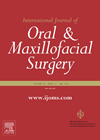
Journal Reviews
How best to follow up a sinonasal cancer?
Sinonasal malignancies are rare tumours and, in the UK, are usually treated in tertiary treatment centres but may well be followed up long term in the patient’s local hospital, so advice on how best to manage these patients is invaluable....
Should we be utilising the pre-lacrimal approach for maxillary sinus inverted papilloma?
For some time now, gold standard management of the maxillary sinus inverted papilloma has been endoscopic medial maxillectomy (EMM). Recently the endoscopic prelacrimal recess approach (EPLRA) has been reported to provide good access whilst preserving the nasolacrimal duct and inferior...
Serum biomarkers for CRSwNP
This cross-sectional comparative study looked at 50 patients with nasal polyps who, at the time of diagnosis, also had a blood test evaluating serum total IgE, IL-17 and Pentraxin-3. The study assesses whether these blood markers are useful in the...
Inverted papilloma
This Croatian study aimed to look at risk factors associated with malignant transformation and recurrence in 91 cases in a single institution over a 20-year period. There were 66 men and 25 women included in the study. The authors reported...
Hierarchy of orthognathic surgical stability
This study was designed as “an overview” of secondary studies and analysed 15 articles. Two procedures were considered highly unstable: a bilateral sagittal split osteotomy for clockwise rotation of the mandible with bi-cortical screw rigid internal fixation, and posterior maxillary...
Risk factors for loco regional recurrence for oral SCC
Over 250,000 cases of oral squamous cell carcinomas are diagnosed annually worldwide with 128,000 registered deaths. The authors of this study are from a single institution in Germany and have conducted a retrospective audit of 517 patients with oral SCC...
Maxillary osteotomy stability
This systematic review assesses inferior repositioning of the maxilla six months after surgery. Two articles were identified with a total of 22 patients. The repositioning was of a mean of 3.2 to 4.5mm anteriorly and 0.1 to 1.8mm posteriorly. Six...
Contemporary UK experience of oropharyngeal transoral laser microsurgery
It is well recognised that the current emergence of HPV-positive oropharyngeal squamous cell carcinoma (OPSCC) as a distinct disease entity requires a fresh look at standard treatment modalities that are based on chemoradiotherapy for stage III/IVa OPSCC. The Newcastle experience...













